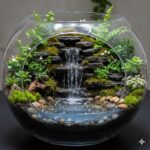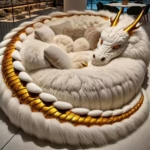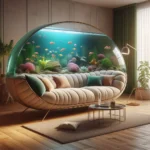Have you ever walked into a home and felt your mood instantly lift at the sight of lush plants decorating the spaces? There’s just something about surrounding yourself with living greenery that feels good. But for many of us, finding the right plants can be a challenge—especially those of us confined to dim corners and low-light nooks.
Where sunlight is scarce, despair not! I’m here to share 16 wonderfully Indoor Plants That Don’t Need Sun that thrive with very little illumination. Whether you’ve got a basement bathroom in need of sprucing up or an apartment kitchen starved of natural light, these plants are practically indestructible and will fill even the dankest of areas with nature’s calming presence. Prepare to be charmed by foliage that laughs in the face of low lighting!
Bromeliads: The Tropical Beauty That Loves the Shade
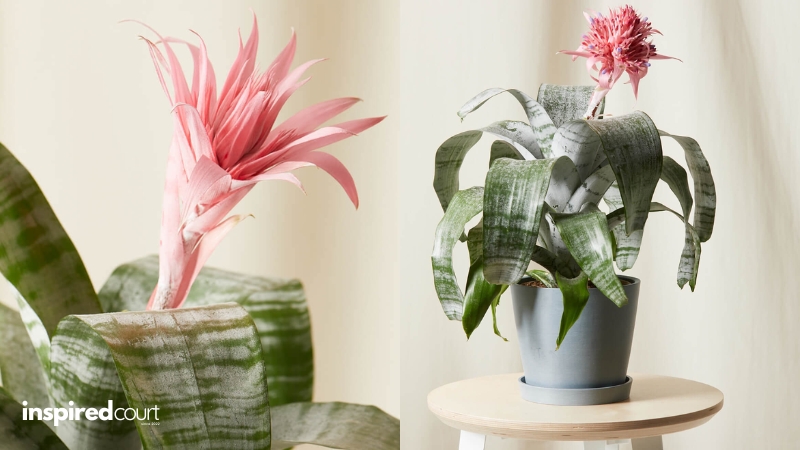
Bromeliads, native to the tropical Americas, are indoor plants that don’t need sun that known for their vibrant colors and dramatic shapes. These plants have thick, colorful leaves that gather to form a central “cup” acting as a water reservoir. They come in various sizes, from tiny species to several feet tall. The foliage can be green, red, purple, orange, spotted, or striped, often forming a beautiful rosette. Bromeliad flowers are intricate and colorful, often towering above the central cup.
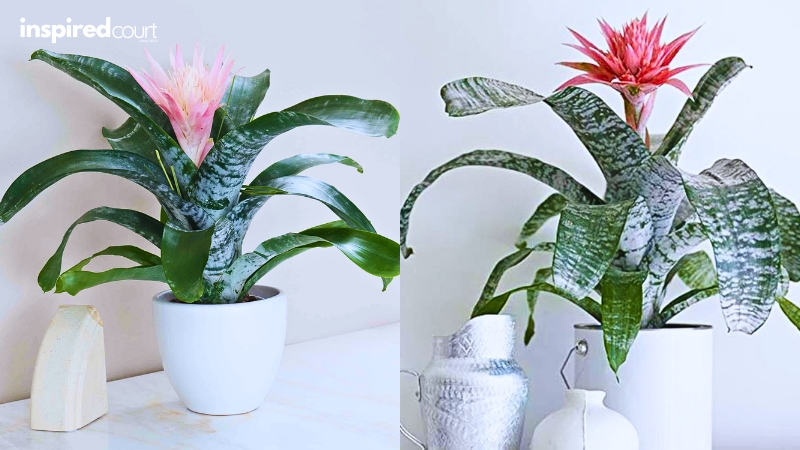
Caring for bromeliads is easy due to their hardy nature. They thrive in bright, indirect light but can tolerate low-light conditions. Keep them on the dry side to avoid root rot. Water by filling the central cup and emptying it every 1-2 weeks. They prefer average to warm temperatures and a humid environment. Bromeliads are low-maintenance, high-impact indoor plants perfect for livening up low-light areas.
Snake Plants: the Indoor Plants That Don’t Need Sun
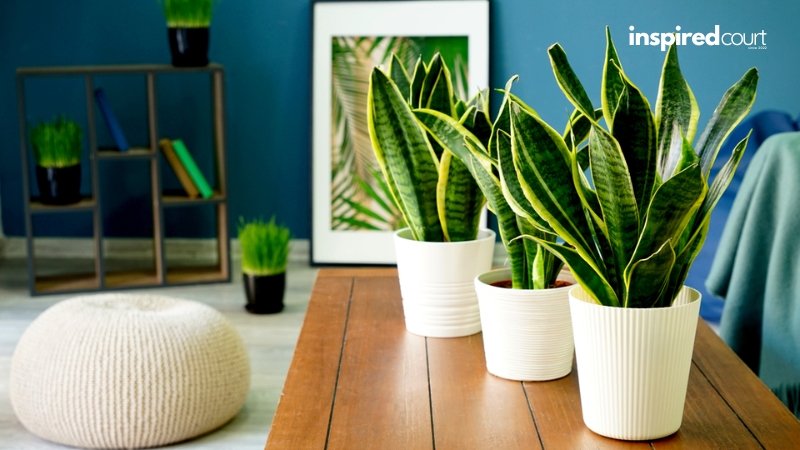
Snake Plants, also known as Sansevieria Trifasciata, are native to West Africa and renowned for their striking sword-like leaves. They’re characterized by their sturdy, upright foliage, which is typically green with yellow or white edges. Their unique visual appeal and hardiness make them a popular choice among indoor plant enthusiasts.
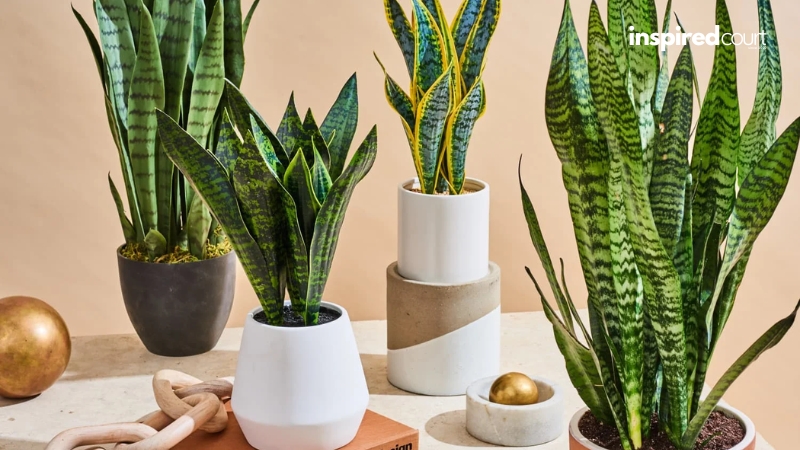
Snake Plants is one of the indoor plants that don’t need sun, and are incredibly low-maintenance and adaptable indoor plants. They can thrive in a variety of lighting conditions, including low light. With their ability to tolerate dry soil between waterings and their indifference towards humidity levels, Snake Plants are the perfect choice for adding a touch of greenery to any corner of your home or office.
Peacock Plants: The Lush, Leafy Showstopper That Doesn’t Need Sunlight
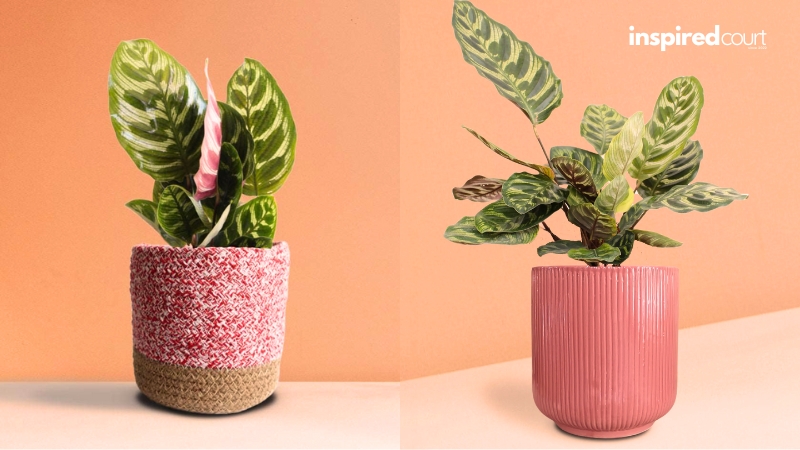
Peacock Plants, scientifically known as Calathea, live up to their name with their stunningly patterned leaves that resemble the extravagant plumage of a peacock. Native to tropical regions of South America, these indoor plants are renowned for their broad, oval leaves that display a combination of deep green, bright green, and purplish hues. The striking color and pattern variations are the primary reasons behind their popularity among indoor gardeners.
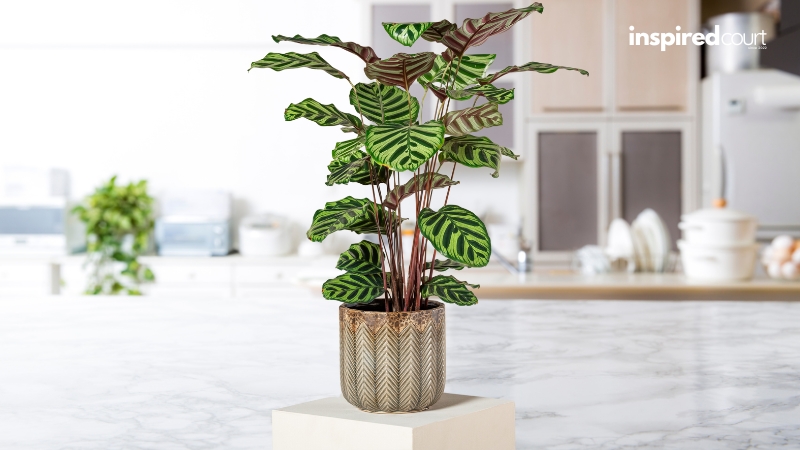
As indoor plants that don’t need sun, caring for Peacock Plants is easy. They tolerate low light but appreciate indirect light for their vibrant leaf patterns. Keep the soil moist but not saturated, allowing the top inch to slightly dry. They thrive in humidity, so misting or using a pebble tray with water is beneficial. Ideal indoor temperatures range from 65 to 75 degrees Fahrenheit. These low-light-loving plants can add a dynamic touch to any room with minimal care.
ZZ Plant: The Indestructible Greenery That Flourishes in Shadows
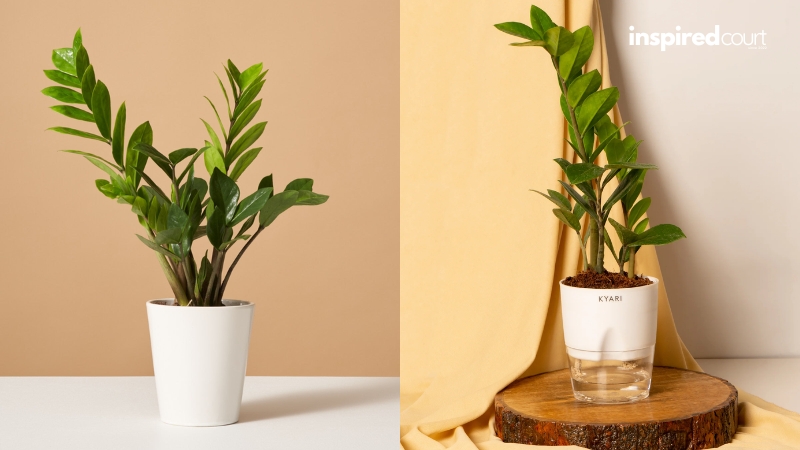
ZZ Plants, scientifically recognized as Zamioculcas Zamiifolia, are a crowd favorite due to their glossy, deep green leaves and their ability to survive in almost any indoor conditions. Native to Eastern Africa, they are known for their thick, rubbery leaves that sprout from sturdy, upright stems. Their hardiness and attractive, waxy foliage make them a sought-after addition to indoor spaces.
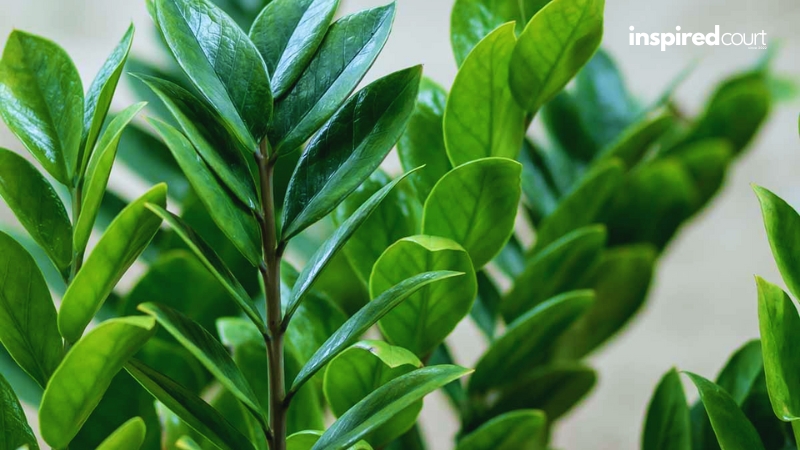
Caring for a ZZ Plant is a breeze. It’s one of those incredible indoor plants that don’t need sun and can survive even in dimly lit rooms. They are drought tolerant and prefer being on the dry side rather than overwatered. Allow the soil to become dry at the top to the touch between watering and they’ll thrive. They are not picky about humidity and can survive in a wide range of indoor temperatures. If you’re looking for a plant that’s almost impossible to kill and can brighten up a low-light corner, the ZZ Plant is a splendid choice.
Heart Leaf Philodendron: The Unassuming Beauty that Flourishes in the Shade
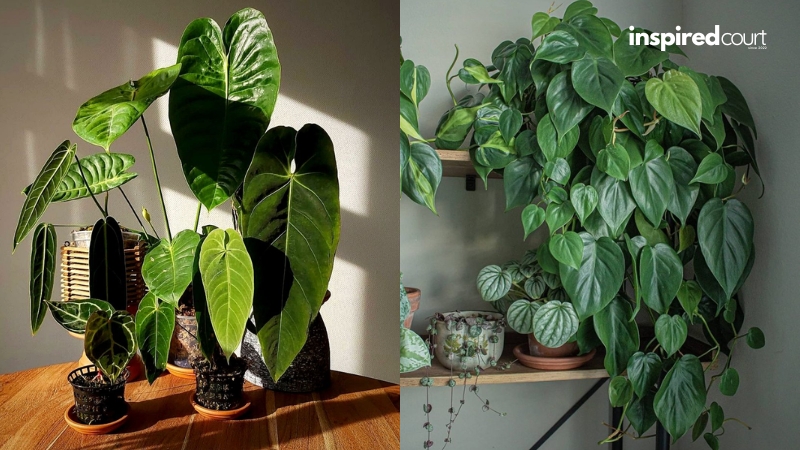
Heart Leaf Philodendron, scientifically known as Philodendron Hederaceum, is a popular indoor choice for its signature heart-shaped leaves and its adaptability to various light conditions. Native to Central America and the Caribbean, this low-light-loving plant is characterized by its lush, trailing vines of glossy, emerald-green leaves that can add a touch of tropical charm to any indoor space.
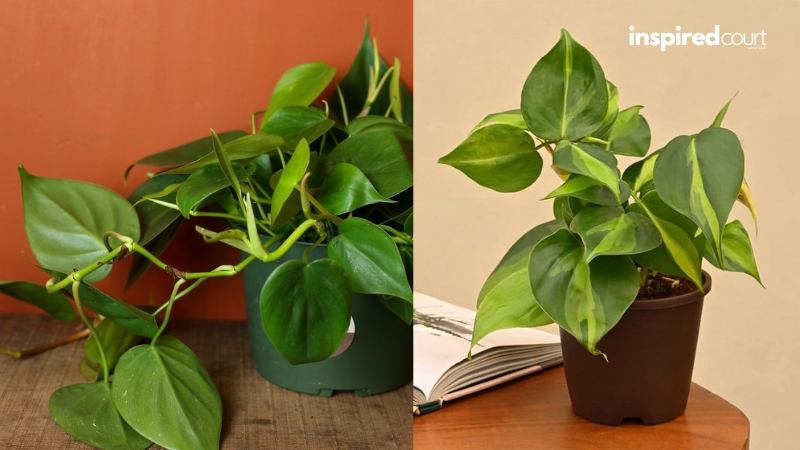
Caring for a Heart Leaf Philodendron is quite straightforward. This plant is one of those perfect indoor plants that don’t need sun and can thrive even in shaded rooms. It prefers well-drained soil and likes to dry out between waterings. As for humidity, it’s adaptable but does appreciate a humid environment. Indoor temperatures between 65 to 75 degrees Fahrenheit are ideal. If you’re seeking a plant that is easy to care for and can bring life to a low-light area, the Heart Leaf Philodendron is an excellent option.
Dragon Tree: The Dramatic Houseplant That Thrives in Low Light
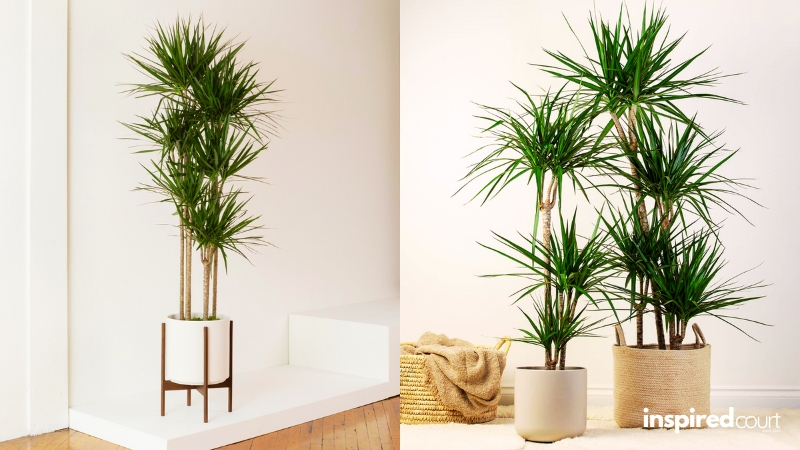
Dragon Trees, or Dracaena Marginata, is a popular choice for indoor gardening due to their dramatic, sword-like leaves and their resilience, especially in low light conditions. Originating from Madagascar and other Indian Ocean islands, these plants are known for their thin, elegant trunk that branches out to support clusters of dark green, red-edged leaves. With their height and unique aesthetic, Dragon Trees can make a significant visual impact, adding an exotic touch to any indoor space.
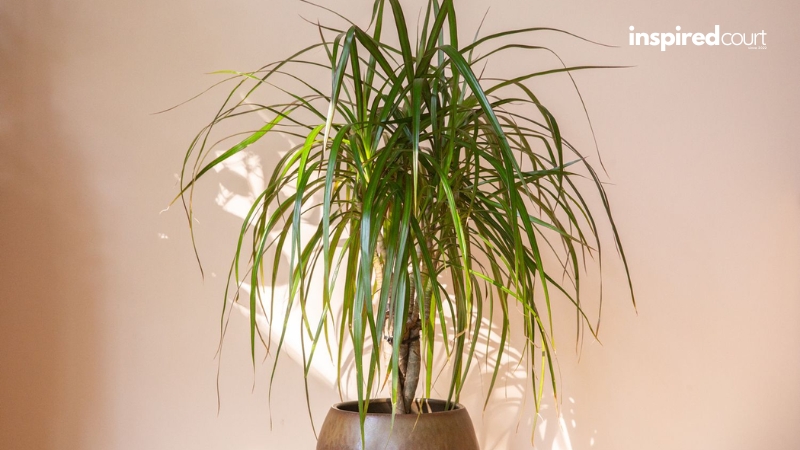
The care required for Dragon Trees is quite minimal. They can adapt to a variety of light conditions, including low light, making them an ideal addition to our list of indoor plants that don’t need sun. Although they prefer a well-drained soil mix, they are drought-resistant and can tolerate periods of dry soil. Watering should be reduced during winter months to avoid waterlogging. They are not particularly sensitive to humidity and can adapt to most indoor temperatures, although they prefer a warmer environment. If you’re looking for a plant that can add height and drama to a low-light space, the Dragon Tree is a captivating choice.
Pothos: The Versatile Vine that Flourishes in Low Light
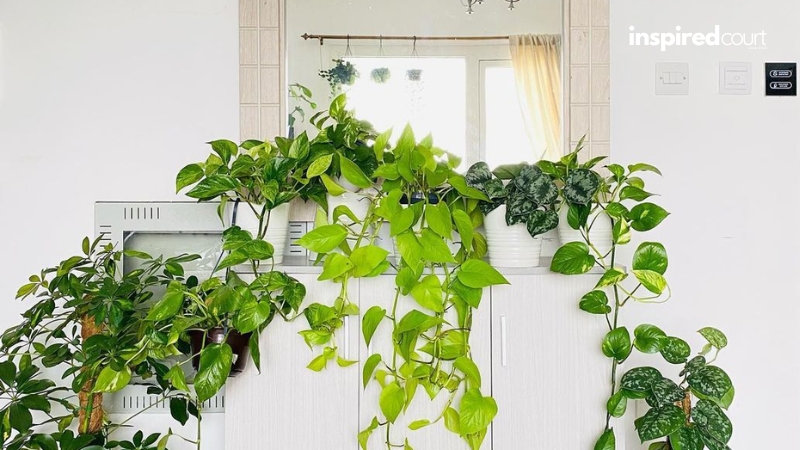
Pothos, also known as Epipremnum Aureum, are prized for their trailing, heart-shaped leaves and their versatility in various lighting conditions. These native Southeast Asian plants are ideal for hanging baskets or high shelves, where their vine-like tendrils can elegantly cascade. Their leaves, which can vary from a deep, solid green to a variegated pattern of gold or white, infuse any space with a vibrant touch of nature.

Pothos are among the select group of indoor plants that don’t need sun and can thrive even in low-light conditions. They are exceptionally hardy, preferring to dry out between waterings, and can tolerate a wide range of humidity levels. While they do well in typical indoor temperatures, they prefer a slightly warmer environment. If you’re looking for a low-maintenance plant that can bring a touch of the tropics to your indoor space, even in less-than-ideal light conditions, Pothos is a fantastic choice.
Related post:
Peace Lily: The Elegant Bloomer That Thrives in the Shade
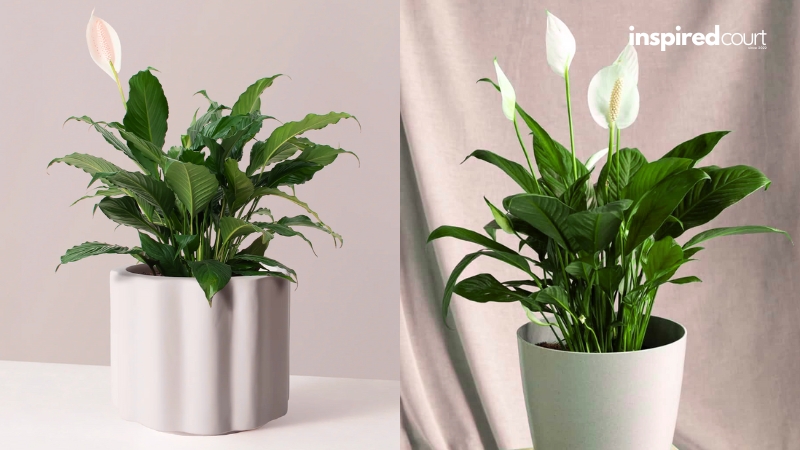
Peace Lilies, scientifically known as Spathiphyllum, are an elegant addition to any indoor collection with their lush, dark green leaves and stunning white flowers. Native to tropical regions of the Americas and Southeast Asia, these plants are beloved for their ability to bloom even in low-light conditions. Their impressive adaptability and alluring appearance make them a popular choice among indoor gardeners.

Caring for a Peace Lily is quite manageable, making it one of those treasured indoor plants that don’t need the sun to flourish. It prefers moist, well-drained soil, but be cautious not to overwater as this can lead to root rot. Allow the top inch of soil to dry out before watering. Peace Lilies appreciate a humid environment, so regular misting can help to keep them happy. They do well in typical indoor temperatures ranging from 65 to 75 degrees Fahrenheit. If you’re looking for a plant that can brighten up a shady corner with beautiful blooms, the Peace Lily is an excellent choice.
Chinese Evergreen: The Hardy Gem That Thrives in Low Light
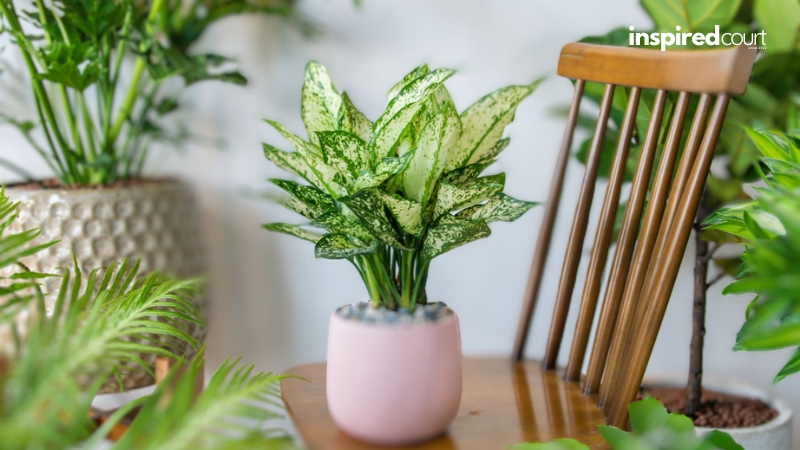
Chinese Evergreen, known scientifically as Aglaonema, stands out for its strikingly variegated leaves and its resilience, especially in low light conditions. Native to the tropical and subtropical regions of Asia, the Chinese Evergreen is renowned for its lush, patterned foliage that can range from deep green to silver, red, and even pink, adding an exotic touch to any indoor setting.
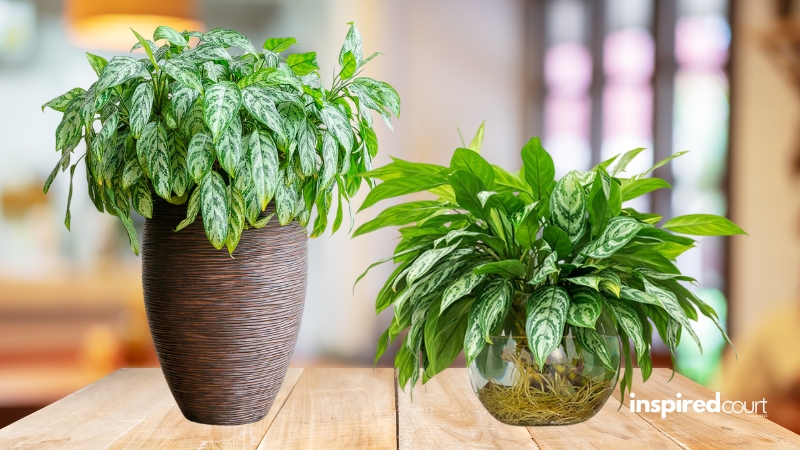
Caring for a Chinese Evergreen is relatively simple, and it fits nicely into the category of indoor plants that don’t need sun to thrive. It prefers a well-drained peat-based potting mix and likes to dry out between waterings. While it can adapt to a variety of humidity levels, it prefers a more humid environment. Indoor temperatures between 65 to 75 degrees Fahrenheit are optimal, but they can tolerate lower temperatures down to about 55 degrees. If you’re seeking a plant that is easy to care for and can add a touch of vibrancy to a low-light corner, the Chinese Evergreen is a fantastic choice.
Corn Plant: The Sturdy Houseplant That Thrives in Shade
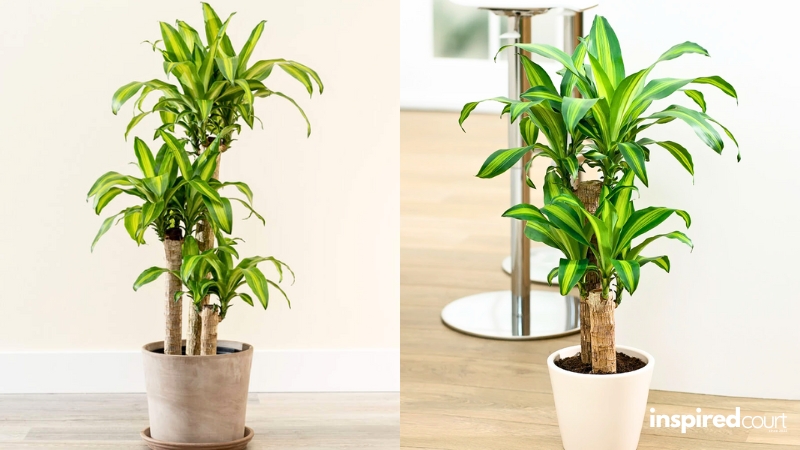
Corn Plants, or Dracaena Massangeana, are a favorite for indoor gardening due to their sturdy, cane-like trunks and lush, arching leaves that resemble those of a corn stalk. Originating from Africa, these plants are known for their adaptability and resilience, making them ideal for various indoor conditions. With their robust structure and impressive height, Corn Plants can add a touch of tropical charm to any indoor space.

Caring for a Corn Plant is quite manageable, making it another excellent addition to the list of indoor plants that don’t need sun. They are tolerant of various light conditions, including low light, although they do appreciate indirect, filtered sunlight if available. They prefer a well-drained potting soil mix and should be allowed to dry out between waterings. In terms of humidity, Corn Plants are adaptable but appreciate a more humid environment. Indoor temperatures between 60 to 75 degrees Fahrenheit are ideal, but they can withstand slightly lower temperatures. If you are on the hunt for a low-maintenance plant that can add a statement to a low-light space, the Corn Plant is a wonderful choice.
Dumb Cane: The Bold Foliage that Flourishes in Dim Light
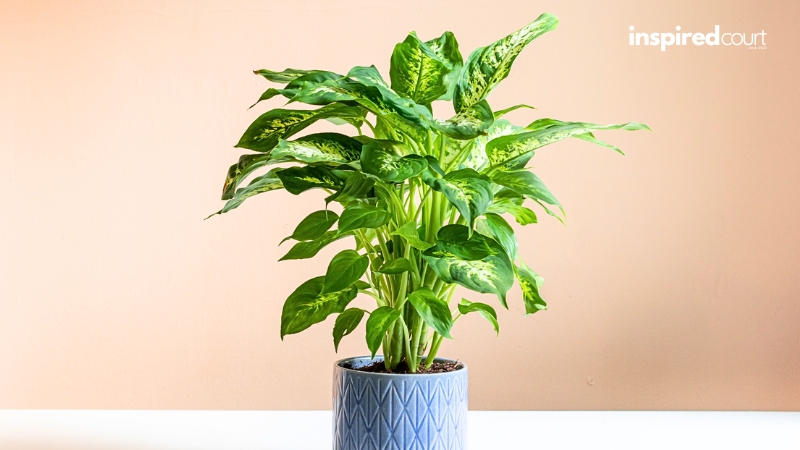
Dumb Cane, also known as Dieffenbachia, is a popular houseplant renowned for its large, broad leaves marked with striking patterns. Native to the tropical regions of the Americas, these plants can add a statement to any indoor setting with their impressive foliage. Dumb Cane’s unique aesthetic and ability to thrive in a variety of light conditions make it a go-to choice for indoor gardeners.
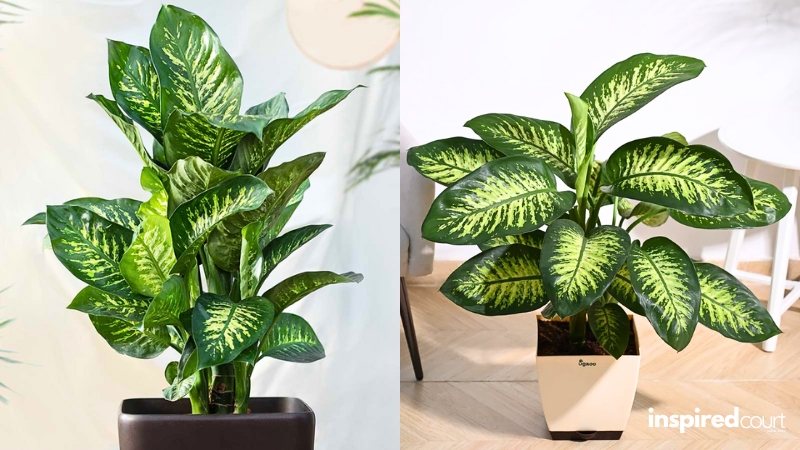
Caring for a Dumb Cane is fairly simple, placing it firmly among the favored indoor plants that don’t need sun. Although Dieffenbachia appreciates bright, indirect sunlight, it can adapt to low light conditions, making it a versatile addition to any plant collection. It prefers a well-drained, peat-based potting mix and needs to dry out between waterings to prevent root rot. In terms of humidity, Dumb Cane can adapt to a range of conditions, but it tends to prefer a more humid environment. Indoor temperatures between 60 to 75 degrees Fahrenheit are ideal. If you’re seeking a plant that brings a touch of the tropics to a dimly lit space, Dumb Cane is a brilliant choice.
Split Leaf Philodendron: The Tropical Powerhouse That Flourishes in Low Light
Split Leaf Philodendron, scientifically known as Philodendron Bipinnatifidum, is a well-loved houseplant celebrated for its large, lacy, heart-shaped leaves. Originating from the rainforests of South America, this plant brings a touch of tropical lushness to any indoor setting. Its easygoing nature and striking appearance make it a darling among indoor plant enthusiasts.
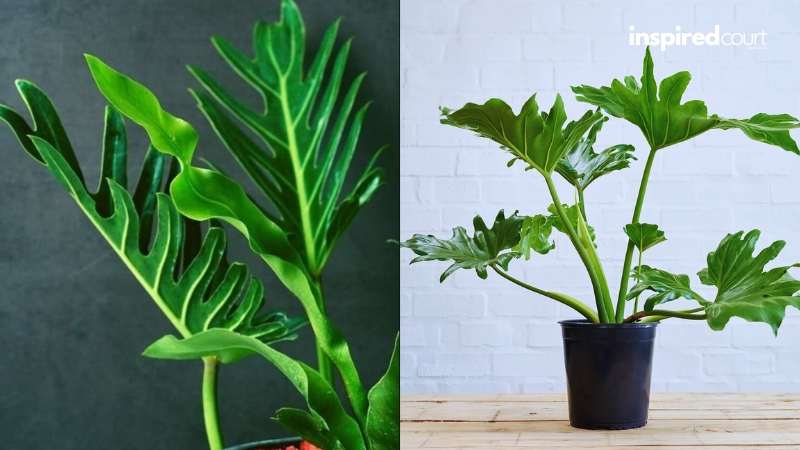
Caring for a Split Leaf Philodendron is fairly straightforward, making it a commendable member of the indoor plants that don’t need sun. Although it appreciates bright, indirect sunlight, it can adapt well to low-light conditions. This tropical beauty prefers a rich, well-draining potting mix and likes to dry out between waterings. It thrives in a humid environment, mimicking its tropical home, so regular misting or keeping it in a humid room like the bathroom can be beneficial. Split Leaf Philodendron prefers indoor temperatures ranging from 65 to 75 degrees Fahrenheit. If you’re searching for a striking, low-maintenance plant that can bring a bit of the rainforest to your interior space, the Split Leaf Philodendron is an excellent choice.
Arrowhead Plant: The Versatile Beauty That Thrives in Low Light
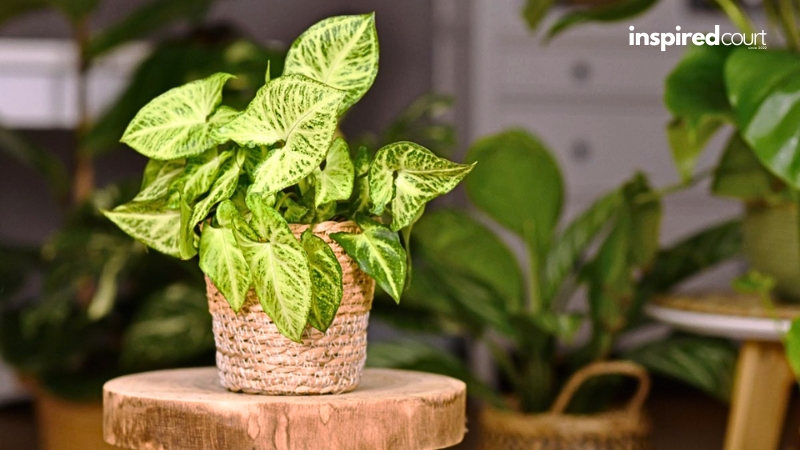
The Arrowhead Plant, scientifically known as Syngonium Podophyllum, is a delightful addition to any indoor garden. Famous for its heart-shaped leaves that gradually morph into an arrowhead shape as they mature, this plant is a native of Latin America. Its lush green foliage with occasional pink, white, or yellow variegation brings a burst of color and life to any indoor space.
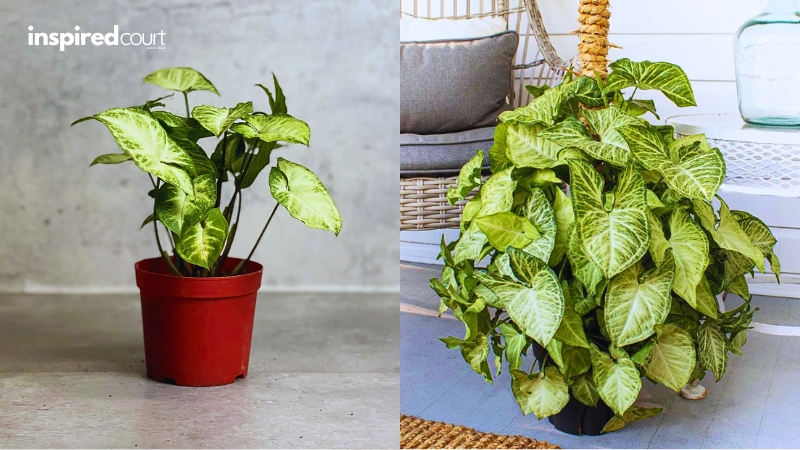
When it comes to plant care, the Arrowhead Plant fits perfectly into the family of indoor plants that don’t need sun. While it enjoys bright, indirect sunlight, it can adapt well to low light conditions, making it an excellent choice for less sunny spots in your home. It prefers a well-drained potting mix and needs to dry out between watering to avoid root rot. Arrowhead Plants appreciate humidity but can adapt to a variety of conditions, although regular misting can help keep them at their best. These plants thrive in typical indoor temperatures ranging from 60 to 75 degrees Fahrenheit. If you’re in search of a beautiful, resilient plant that can thrive in a dimly lit environment, the Arrowhead Plant is an excellent choice.
Spider Plant: The Hardy Evergreen That Excels in Low Light
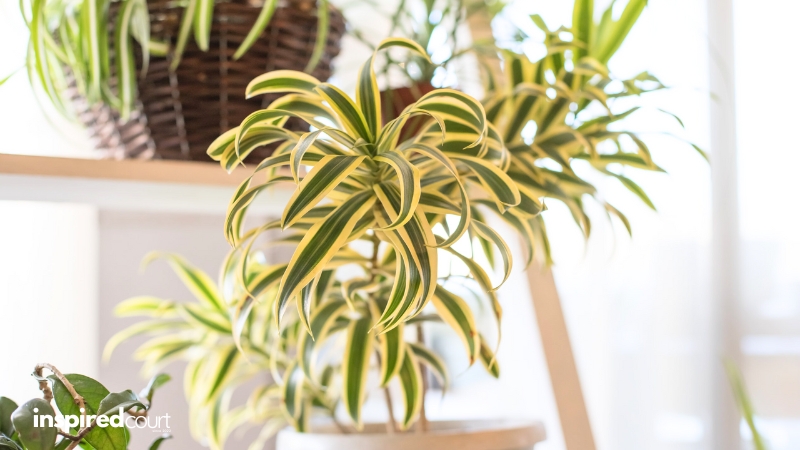
The Spider Plant, scientifically known as Chlorophytum Comosum, is a classic houseplant and a wonderful choice for those less sunny spots in your home. Recognized for its arching, striped foliage, and offshoots that look like little spiders, hence the name, this plant is native to tropical and southern Africa. Its easy-care nature and fun, whimsical appearance make it a popular choice for indoor gardeners.

When it comes to plant care, the Spider Plant stands proudly among the indoor plants that don’t need sun. While it can grow in a variety of light conditions, it’s perfectly able to adapt to lower light levels, making it ideal for spaces with less sunlight. Spider Plants prefer a well-draining potting mix and should be allowed to dry out between waterings to prevent root rot. They are fairly adaptable in terms of humidity, although they do appreciate a bit of moisture in the air. Indoor temperatures between 60 to 75 degrees Fahrenheit are ideal for Spider Plants. If you’re in search of a robust and visually intriguing plant that can thrive in a low-light environment, the Spider Plant is an excellent choice.
Related Post:
Swiss Cheese Plant: The Iconic Houseplant that Thrives in Low Light
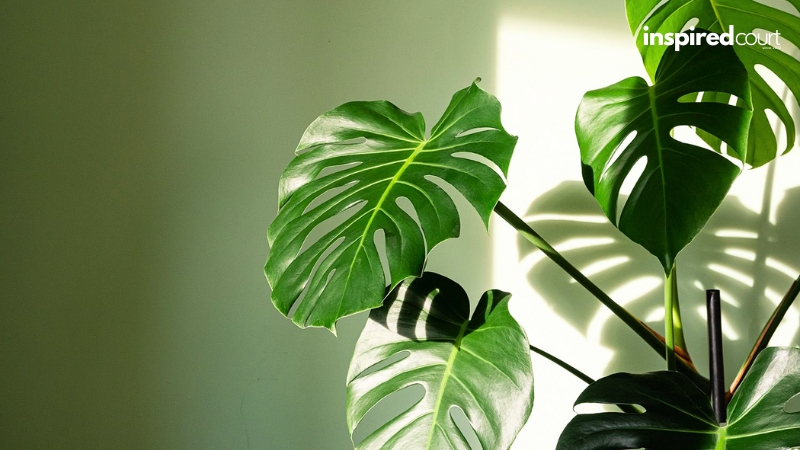
The Swiss Cheese Plant, scientifically known as Monstera Deliciosa, is an iconic houseplant with its distinctive perforated leaves that evoke images of Swiss cheese. Native to the tropical forests of Central and South America, this plant is celebrated for its unique, large, glossy green leaves that make a dramatic statement in any indoor space.
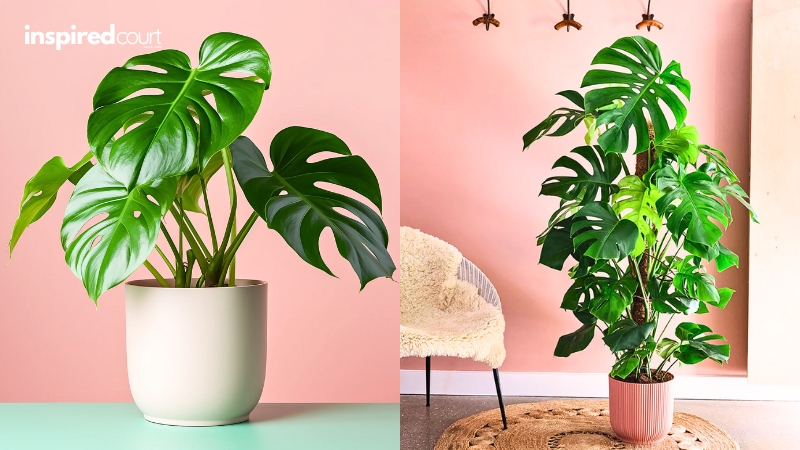
Caring for a Swiss Cheese Plant is relatively simple, hence its popularity among indoor plants that don’t need sun. While it does appreciate bright, indirect sunlight, it can adapt well to low-light conditions. This makes it a fantastic choice for spaces in your home that don’t receive a lot of sunlight. The plant prefers a well-draining potting mix and should be watered only when the top inch of soil has dried out to prevent root rot. Like many tropicals, it prefers a humid environment, but it can adapt to less humid conditions if necessary. Swiss Cheese Plants do well in typical indoor temperatures, between 65 to 75 degrees Fahrenheit. If you’re looking for a unique, eye-catching plant that can flourish with less sun, the Swiss Cheese Plant fits the bill perfectly.
Cast Iron Plant: The Sturdy Survivor That Thrives in Low Light
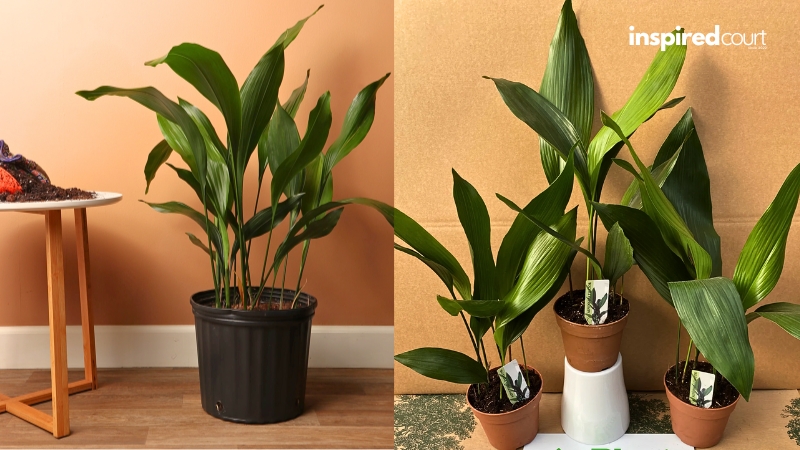
The Cast Iron Plant, scientifically known as Aspidistra Elatior, has earned its name due to its robust nature. A native to the understory of forests in China and Japan, this hardy plant is famous for its ability to tolerate conditions that would be challenging for many other plants. Its dark green, glossy leaves bring a touch of elegance to any indoor space.
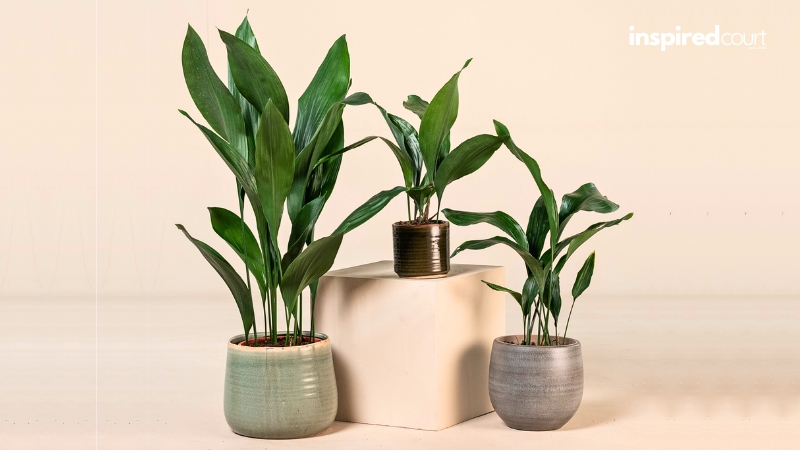
Taking care of a Cast Iron Plant is a breeze, making it an exemplary member of the indoor plants that don’t need sun. It’s perfectly comfortable in low light conditions, but like most houseplants, it appreciates bright, indirect light. This adaptability makes it a perfect choice for spaces in your home that don’t get a lot of sunlight. The plant prefers well-draining soil and should be watered when the top inch of the soil is dry to avoid overwatering. It doesn’t require high humidity and can withstand typical indoor temperatures between 60 to 75 degrees Fahrenheit. If you’re looking for an indoor plant with a reputation for resilience and the ability to flourish with less sunlight, the Cast Iron Plant is the ideal choice.
Taking care of houseplants isn’t just for those lucky folks with sun-soaked homes. There are plenty of amazing indoor plants that can thrive even in low-light conditions. These plants not only bring natural beauty to your space but also purify the air and boost your mood. Keep in mind, that even low-light plants need some care, so it’s important to understand their watering, soil, and temperature requirements to keep them happy. With these tough plants, you can turn any dull corner of your home into a vibrant, green paradise.

